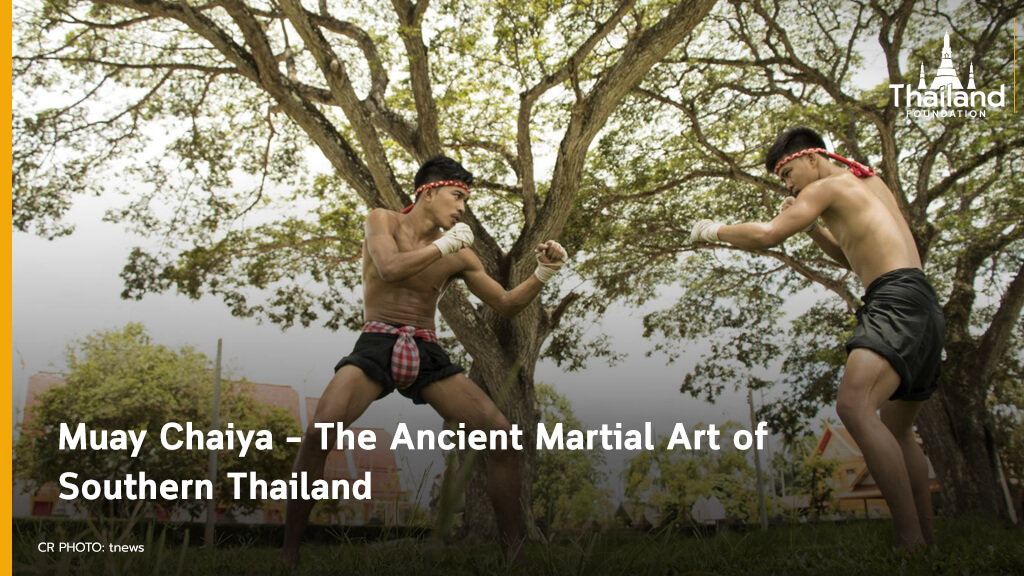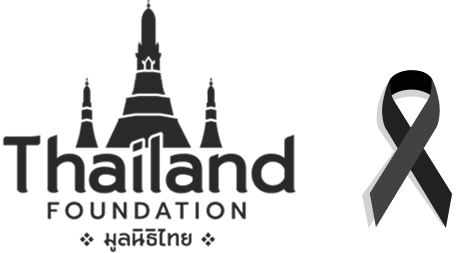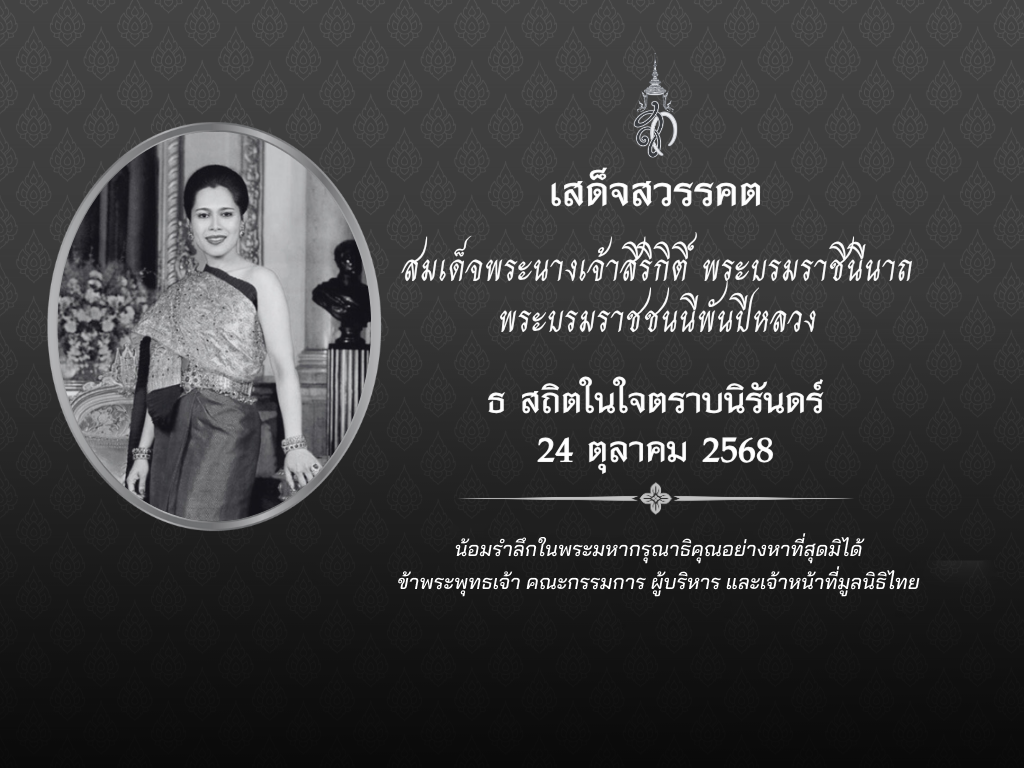
Little has been written about the exact origins of Muay Thai. Although there are references in various texts as to its birth, it is difficult to pinpoint exactly when and where this world-famous discipline first made its appearance.
However, one thing is certain –wherever there are Thai people, there is Muay Thai. It is a spectacular form of martial arts, one that uses almost every part of the body – the fists, feet, knees, and elbows. Wherever the Thais go, Muay Thai travels with them.
In Southern Thailand, one style of kickboxing has long been renowned for its strength, techniques, and agility. This is the story of Muay Chaiya (มวยไชยา).
History
Muay Chaiya is a unique style of Muay Boran (มวยโบราณ), an ancient form of kickboxing that became the predecessor to modern Muay Thai. The fighting discipline has long been present in Chaiya, a city in Surat Thani Province, but was in fact invented by a fighter who originally hailed from Bangkok.
According to legend, the fighter left Bangkok after becoming fed up with the city’s bureaucracy. He decided to enter monkhood and travelled south. On reaching Tambon Phumriang in Chaiya district, he caused quite a stir when he caught a naughty elephant using coconut shells. The villagers were so impressed that they chipped in to build a monastery for the visiting Buddhist monk and called it, quite aptly, “Wat Thoong Jub Chang” (Temple of the Elephant Catching Field).
Chaiya itself also has a long history. It was one of three major cities of the flourishing Srivijaya Empire during the 16th century. After engaging in warfare against the Majapahit Empire in the late 1700s to expand their control over the Malay peninsula and Java islands, both sides gradually grew weak. Chaiya was later invaded and annexed by the growing Siamese Kingdom in 1800.

Phra Borommathat Chaiya (The Great Pagoda of Chaiya), the spiritual heart of Chaiya
[cr. Surat Thani Tourism]
The name of the fighter monk from Bangkok has never been documented, but locals chose to call him “Poh Than Ma” (พ่อท่านมา) – Reverend Father Who Arrived at this Land.
Throughout his stay at Wat Thoong Jub Chang, Poh Than Ma not only taught Buddhist morale to the locals, but also took the time to give kickboxing lessons to his followers. One of his students was Phraya Waji Sattayarak (Cha Sriyaphai), the ruler of Chaiya who later taught the discipline to soldiers and others, including his own children. The youngest of Cha’s children was the famous Muay Chaiya grandmaster Khet Sriyaphai.
Muay Chaiya swiftly gained popularity and Muay Chaiya fights turned into a popular form of entertainment for the people during festivals and celebrations. The martial art reached its peak at a venue known as Sala Kao Hong (Nine-room Sala), which was originally built by Phraya Waji Sattayarak for public use.
The purpose of Sala Kao Hong was to serve as a shelter for travellers, as well as a venue for a religious celebration held during the 11th month of the lunar calendar. Muay Chaiya was one of the attractions during this festival. Sala Kao Hong played an important part in promoting Muay Chaiya from past to present, as it was often the venue for these official Muay Chaiya fights.
As Muay Chaiya fighters continued to train regularly, their skills improved, and so did the discipline. One of the important events in the history of Muay Chaiya was when Phraya Waji Sattayarak, Chaiya’s Governor, sent Plong Chamnongthong, a boxer from his camp, to fight against a fighter from Nakhon Ratchasima Province, in front of King Rama V (1909). Plong was able to defeat his opponent using the “Sua Lark Hang” (Tiger Dragging the Tail) move, which led to it being incorporated into the Wai Khru Ram Muay (Ritual Dance to Honor the Teachers) of Muay Chaiya.
Plong was also awarded with a title from the King after the fight, becoming known as “Muen Muay Mee Chue” (Famed Fighter). “Muen” is the sixth-ranked title given by the King (there are eight ranks) and other fighters also earned titles as well, for example the heavy-hitting Korat fighter became “Muen Cha-ngat Cherng Chok” (Punchy Fighter) and the intelligent Lop Buri fighter became “Muen Mue Maen Mud” (Accurate Puncher).

Muen Muay Mee Chue fights in front of the King [cr. Wikipedia]
Another prominent figure in the Poh Than Ma line of Muay Chaiya was the youngest son of Phraya Waji Sattayarak – Khet Sriyaphai. He is considered to be grandmaster of Muay Chaiya due to his outstanding accomplishments in the field.
Grandmaster Khet always had a great interest in Muay Thai. Apart from the training given to him by his father, he also went to 12 other teachers, and even travelled around the country as well as overseas to learn about other forms of fighting.
Grandmaster Khet devoted his whole life to Muay Chaiya, imbuing students with the knowledge that he had collected over the years. By now Muay Chaiya had grown into a sophisticated form of martial art that draws on systematic forms and science.
Identity
Muay Chaiya is a highly delicate art form, particularly in terms of defense. The style’s combat philosophy starts with the protection of what is inside before protecting what is outside. In other words, it is the awareness and the ability to know right from wrong before any actual fighting is to occur.
Each move is made with full awareness, whether lifting the leg, resting the arm, wrapping the fist, and more. There must be a reason for every action and all of them must be controlled. Muay Chaiya fighters possess great focus, determination, and patience. They train heavily and learn to rein in their emotions.
These qualities make up the Muay Chaiya identity. Muay Chaiya is a discipline that stresses tight defence, from the toes all the way to the hair tip. Once a fighter is able to defend himself, he then relies on timing and opportunity to strike back hard and fast.
The Muay Chaiya Stance
The Poh Than Ma Muay Chaiya stance has the feet parallel to each other, a shoulder width apart with the left leg in front. Both feet are pointed to the right at a 45-degree angle, and the knees are slightly bent. The left arm is up, making a 45-degree angle to the ground, while the left fist is positioned at the end of the right eyebrow. Both eyes can still clearly see what is in front of them, and although the fist is clinched, the left arm remains loose. Meanwhile, the right arm is positioned lower to protect the ribcage. The right fist is positioned at the halfway mark where the left arm makes the 45-degree angle. It barely touches the left arm and is not too far nor too close to the chin. The right arm also makes a 45-degree angle, but is not touching the ribcage, remaining nice and loose. While the shoulder, waist, and feet are pointing in the same direction, the head remains straight, facing the opponent in front. When switching to the right leg in front, the stance is taken up in the opposite order.
Approach
“Yang Sam Khum” (the Three-step Approach) is Muay Chaiya’s approach to advancing and retreating. It allows fighters to attack and defend at all times. The front and back steps are taken in a zigzag manner, with the feet positioned for a three-point walk or a triangle. This is in fact alternating the angle towards the opponent so that the torso area is minimized as much as possible. Trainees must practice this approach until they are fluent in it before being able to launch attacks effectively.

Yang Sam Khum [cr. KMax Gym Muay Thai]
In addition, Yang Sam Khum also prepares the mind. According to the teaching: “The first step is awareness and focus, with all parts of the body being ready. Step two is remembrance of the teacher who gave the knowledge. Step three consists of skills and expertise in using various weapons, such as fists, feet, knees, and elbows. Regular training is needed to maintain this state of “readiness”.
The Body as a Weapon
“Mae Mai Muay Chaiya” are the basic “moves” that fighters must learn and master before continuing to “Luk Mai Muay Chaiya”, or more complicated techniques. Basic moves include using various body parts: fists for punching, feet for various types of kicks, and knees and elbows for striking, etc. After mastering these exercises, the student progresses to the next level of training.
Luk mai moves are complex fighting sequences that stem from the basic moves. Luk mai stresses counterattacking and turning the opponent’s own force against themselves.
There is a total of 15 Muay Chaiya moves, all of which carry fancy names. When the standardized version of Muay Thai training fist came into being, moves from different styles of kickboxing were compiled into a curriculum. Some of these moves were said to have originated from King Sanphet VIII (1703–1709), known colloquially as the Tiger king. In the end, a total of 15 moves were documented in the curriculum, including the famous “Jorakay Fard Harng” (Crocodile Tail Kick) and “Hak Khor Erawan” (Elephant Neck-breaker). Today, this style of Muay Thai is known as “Tumrub Muay Prachao Sua”, or “The Tiger King’s Kickboxing Style”.

Muay Chaiya move [cr. KMax Gym Muay Thai]
Differences remain, however, between the standardized form of Thai kickboxing and Muay Chaiya. While the standard style relies mainly on basic moves, Muay Chaiya is more focused on complicated moves and sequences of actions.
Training
Muay Chaiya consists of systematic training drills featuring four important movements – cover, flick, close, and open. Cover refers to taking a stance with full protection. Flick is the use of the hands and fists to brush attacks. Close is the lifting up various body parts to defend against attacks. Open is the deflection of the opponent’s strikes and counterattacks.
“Phan Lum” means to launch attacks continuously. Because Muay Thai fights often drag on for a long period of time, contestants must be trained to fight continuously. Phan lum training consists of using mae mai and luk mai in combination
In addition, Muay Chaiya also boasts other training drills including footwork, avoiding strikes, wrestling, holds, throws, joint breaking, and more.
Outfit
Muay Chaiya fighters have a unique way of dressing up for a fight. They wrap their fists with raw ropes from the wrist to the knuckles. Any type of pants are allowed as long as they do not inhibit free movements. Many prefer three-quarter pants.
The pha kard krapok (loincloth), used for protection of the groin area, is worn around the waist, with one end hanging so that it can be used to secure the genital area and provide a certain level of safety.

A master places a mongkhon on his student’s head
[cr. FB: MuayThaiChaiya]
Fighters also wear mongkhon (headbands) and prachiad (armbands) carrying sacred relics for protection. Muay Chaiya headbands and armbands are made from the salu, a type of talismanic cloth, in contrast to the headbands and armbands made from sacred white strings, which are worn by fighters from other styles of Muay Thai.
Wai Khru Muay Chaiya
Wai Khru (ไหว้ครู) or Wai Khru Ram Muay is a sacred ritual dance performed before the beginning of each fight. During the dance, fighters demonstrate reverence for their teachers through highly stylized movements.
The Wai Khru dance in Muay Chaiya is unique from other kickboxing styles. Buddhists fighters will get into a squat position, while Muslims fighters sit on the floor with legs crossed. They pay respect by performing the wai gesture (putting your palms together, holding them up to the middle of your chest, and slightly bending your head) on the floor as a sign of respect for their teachers, before standing up to recite spells. After that, they stomp the floor and commence the dance by walking to the four corners of the boxing ring, the final corner being the opponent’s. The fighter then stands in front of his opponent and writes the opponent’s name with his foot on the floor, before stomping on it. Finally, he turns around, proceeds back to his corner, and signal the referee that he is ready to fight.
The purpose of the Wai Khru ritual in Muay Chaiya is express gratitude towards the teachers as well as warm up the body. It also helps create focus and informs the fighter about the environment (wind and sun direction included). A perfect Wai Khru dance has to both beautiful and indicative of the fighter’s skill.
Muay Chaiya is a genuine fighting discipline that still exists amidst the commercially driven forms Muay Thai Today, many are drawn to this ancient martial art due to its power to develop physical strength and mental whit.
********************
Reference
Sudprasert, Kridakorn. Muay Thai Muay Chaiya [Muay Thai and Muay Chaiya]. Watthanatham Journal: Department of Cultural Promotion, vol. 57, no. 1, January-March 2018, p. 42-49. Available at http://magazine.culture.go.th/2018/1/mobile/index.html#p=44.




